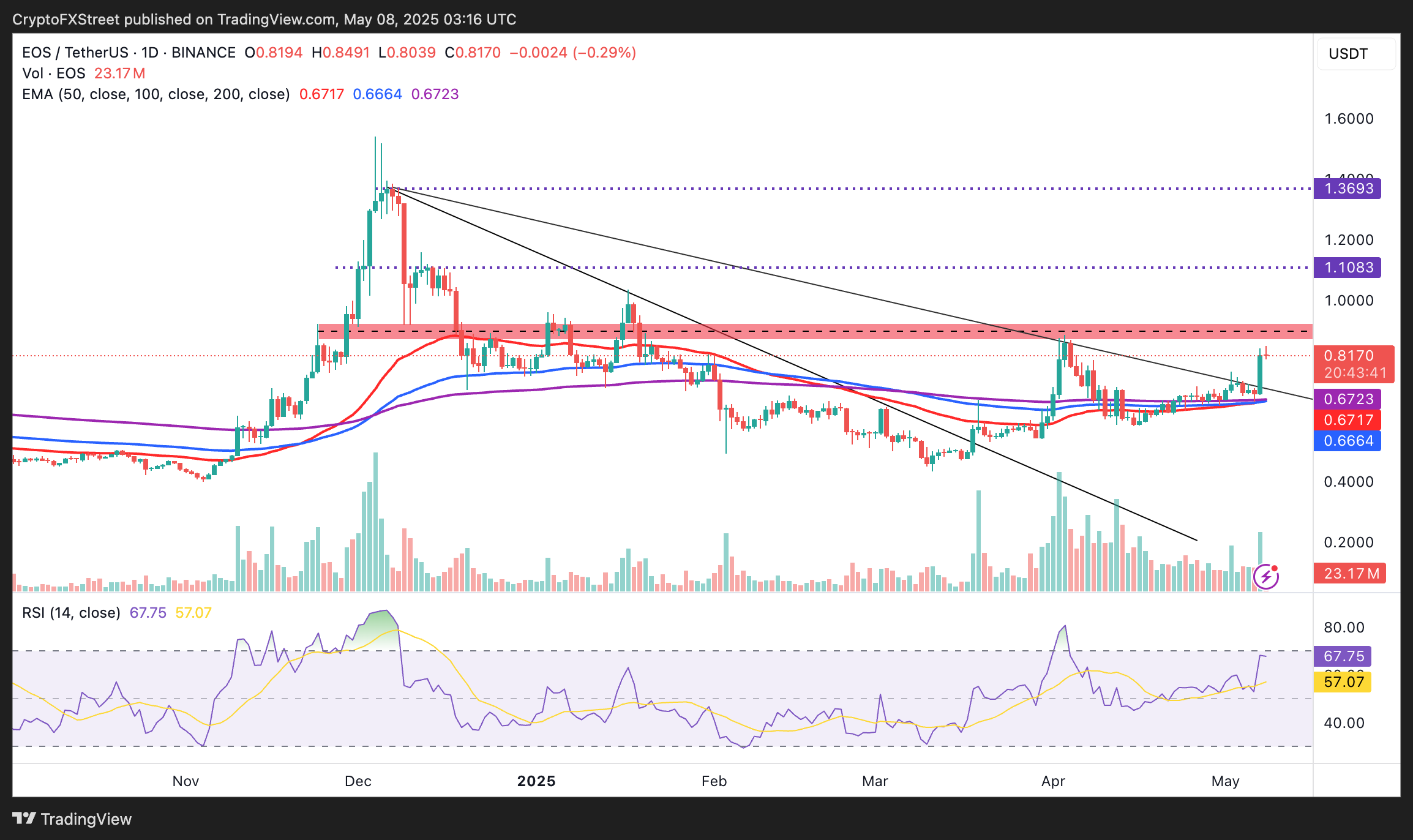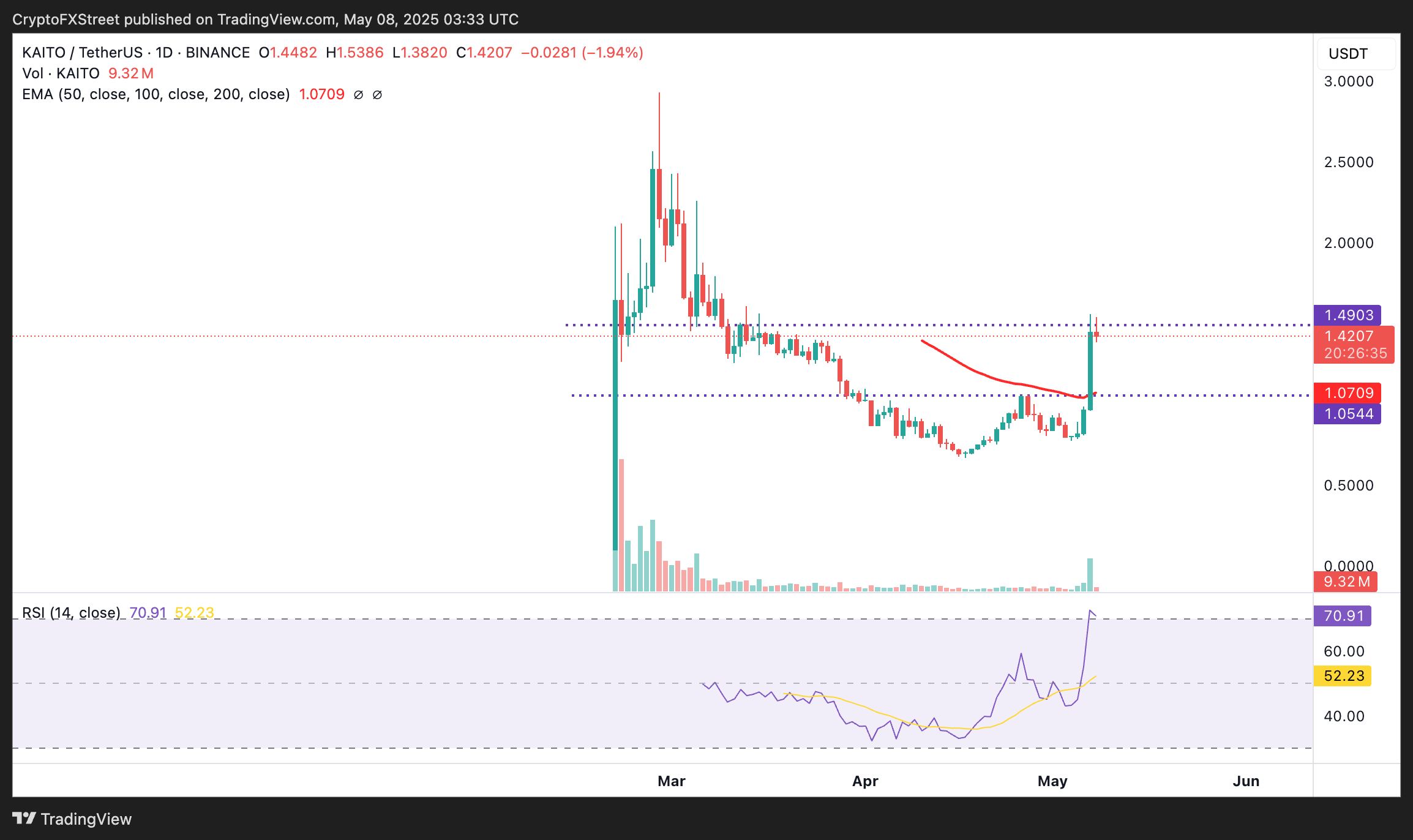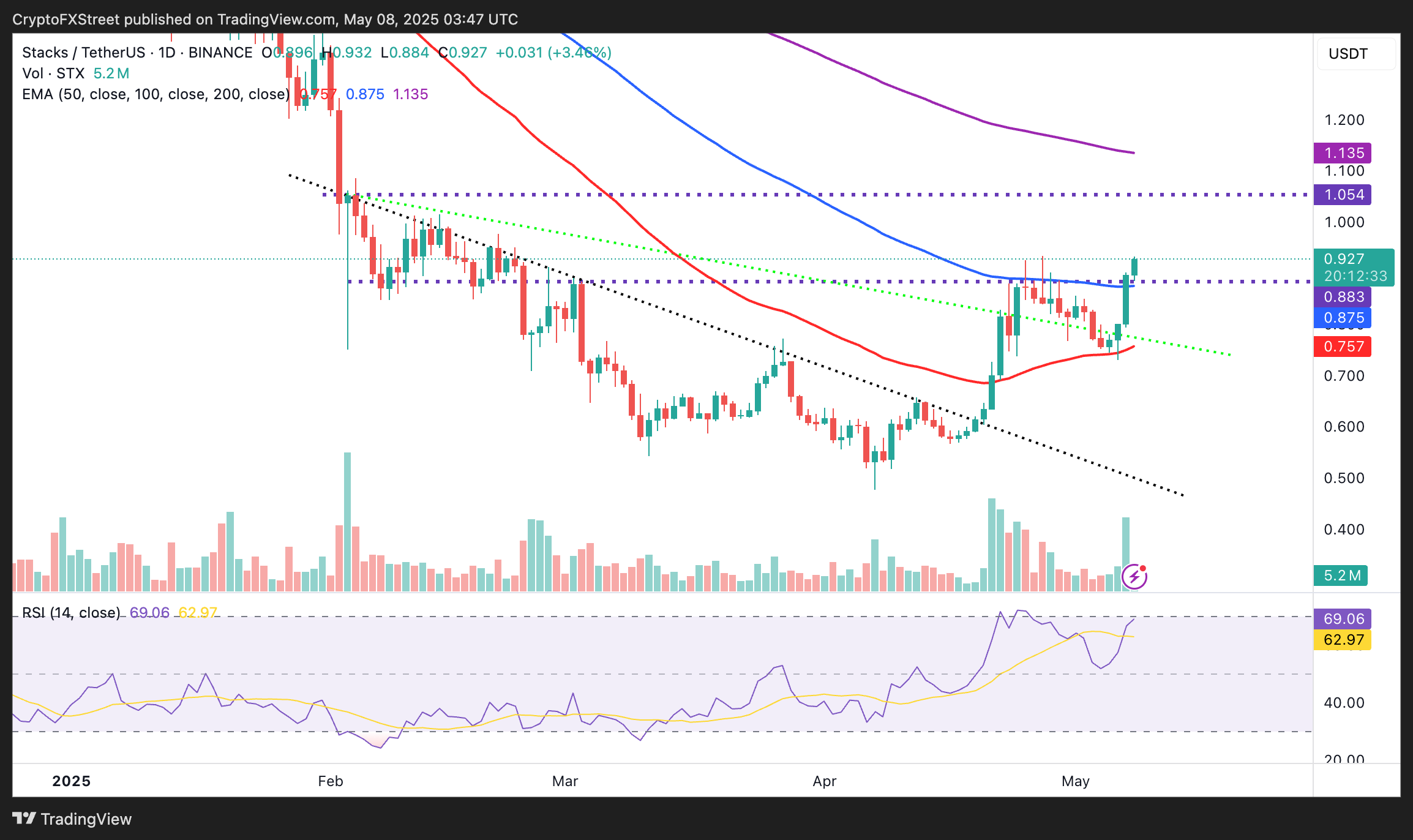Top 3 gainers EOS, Kaito, Stacks: Navigating the dynamic altcoin market
- The altcoin market is becoming complex, with fragmented narratives and tight liquidity.
- EOS's bullish comeback is steady ahead of a planned rebrand to Vaulta on May 14.
- Kaito tackles $1.50 resistance, following a 57% monthly increase.
- Stacks reclaims the 100-day EMA as support, as the RSI signals a stronger bullish momentum.
The altcoin market is getting more complex to navigate, with fragmented narratives, limited liquidity, and massive token unlocks creating hefty headwinds. As K33 Research outlined in the latest report on the future of altcoins, "a broad-based altcoin season is unlikely", especially with institutional investors focusing on Bitcoin (BTC) due to the Exchange Traded Funds (ETFs). However, despite the fast-changing dynamics and headwinds, select altcoins such as EOS, Kaito, and Stacks (STX) are advancing their bullish narratives, with some rallying in double digits.
Navigating the dynamic altcoin market
Unlike other cycles, the current one is an uphill battle, especially for altcoin-focused investors. The Bitcoin dominance remains elevated, supported by steady ETF inflows and institutional adoption, while altcoins lag.
"Altcoins should demonstrate real product-market fit, revenue, or user growth to attract capital," the K33 Research report said. Within the broader altcoin season, isolated meme coin plays have had a chance to break out. Still, "pure narrative plays without fundamentals are fading," the report added.
Therefore, investors must align with the right narratives, supported by strong fundamentals, to be the ultimate winners.
EOS breakout ahead of its rebrand to Vaulta
EOS is set for its planned rebrand on May 14, which will unlock the ecosystem as a web3 banking powerhouse. The blockchain company had to start this rebrand process. Essentially, the functions and features we've added over the last three and a half years have all been in a particular direction of Web3 banking," Vaulta Foundation CEO, Yves La Rose, said during the Digital Asset Summit 2025.
Meanwhile, EOS is gaining bullish momentum, trading at $0.81 at the time of writing on Thursday, ahead of the swap to the network's new token A. The uptrend appears steady above a major confluence support around $0.67 formed by the 50-day, the 100-day, and the 200-day Exponential Moving Averages (EMAs).
A break toward the $1.00 hurdle, last tested in December, is on the cards as long as the Relative Strength Index (RSI) indicator, currently at 67.88, sustains the upward trend into the overbought territory.

EOS/USD daily chart
Traders must prepare for all outcomes, including resistance shown in red on the chart above at around $0.90 and a potential drop to the confluence support at $0.67. As the RSI indicator rises into the overbought, it increases the probability of a reversal, often due to bullish exhaustion.
Kaito is consolidating gains as a reversal looms
Kaito's price bullish momentum from the April low of $0.66 to May highs of $1.56 comes amid growing interest in Artificial Intelligence (AI) driven narratives. Additionally, the team continues to work on new features and use cases to compete in the fast-moving AI sector.
Kaito recently introduced staking, allowing users to align with the network's future while earning rewards. Moreover, the staking feature is highly flexible as staked Kaito can be assigned to other projects within the ecosystem.
"This gives sKAITO holders an avenue to fee share from both the network more generally and/or from specific projects of their choice," Kaito highlighted in an X post.
Kaito's price exchanges at $1.41 at the time of writing, down over 2% on the day. Traders could adjust their portfolios considering the slightly overbought Relative Strength Index (RSI) at 70.

KAITO/USDT daily chart
The seller congestion at $1.50 could delay the breakout targeting $2.00, a supply zone previously tested in March. If the RSI indicator slides deeper into the neutral region, profit-taking will likely intensify, creating headwinds.
Stacks extends rally targeting $1.00
Stacks' price is on the move, increasing over 3% on the day to exchange hands at $0.92. The uptrend stems from several factors, including a breakout above the 50-day EMA at $0.75 followed by the 100-day EMA at $0.88, and stability in the broader cryptocurrency market.
Momentum indicators like the RSI reveal that bulls have the upper hand and are likely to push STX above the $1.00 resistance in upcoming sessions.

STX/USDT daily chart
However, it is worth mentioning that the RSI is nearly overbought at 69, which means that the risk of a trend reversal is significantly higher. Hence, there is a need to prepare for a potential correction. In case of a trend correction, key levels are the 100-day EMA at $0.88 and the 50-day EMA at $0.75.
Cryptocurrency prices FAQs
Token launches influence demand and adoption among market participants. Listings on crypto exchanges deepen the liquidity for an asset and add new participants to an asset’s network. This is typically bullish for a digital asset.
A hack is an event in which an attacker captures a large volume of the asset from a DeFi bridge or hot wallet of an exchange or any other crypto platform via exploits, bugs or other methods. The exploiter then transfers these tokens out of the exchange platforms to ultimately sell or swap the assets for other cryptocurrencies or stablecoins. Such events often involve an en masse panic triggering a sell-off in the affected assets.
Macroeconomic events like the US Federal Reserve’s decision on interest rates influence crypto assets mainly through the direct impact they have on the US Dollar. An increase in interest rate typically negatively influences Bitcoin and altcoin prices, and vice versa. If the US Dollar index declines, risk assets and associated leverage for trading gets cheaper, in turn driving crypto prices higher.
Halvings are typically considered bullish events as they slash the block reward in half for miners, constricting the supply of the asset. At consistent demand if the supply reduces, the asset’s price climbs.



